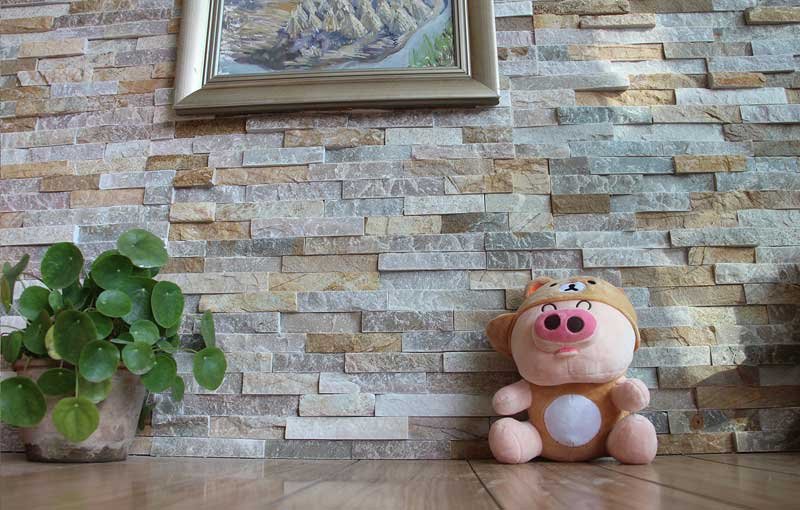エクステリアストーンクラッディング あらゆる空間の美学を高めることができますが、それを削除する必要がある、または削除する必要がある場合があります。損傷、時代遅れのデザイン、または改修プロジェクトによるものであろうと、石のクラッディングを削除することは、慎重な準備と適切なツールを必要とする挑戦的な作業です。下にある壁に不必要な損傷を引き起こすことなく、天然石のクラッドを効果的に除去するのに役立つ詳細なステップバイステップガイドを以下に示します。
-
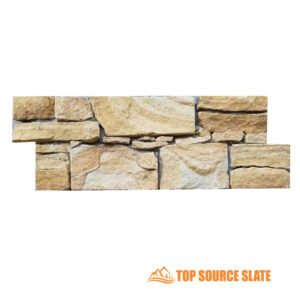 新しいスタイルの外観自然Z石の壁の覆い
新しいスタイルの外観自然Z石の壁の覆い -
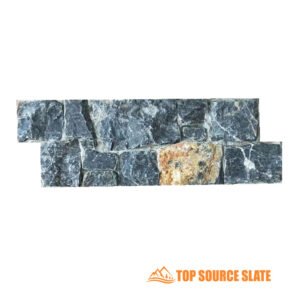 新しいスタイルの外観天然Z石のクラッディング
新しいスタイルの外観天然Z石のクラッディング -
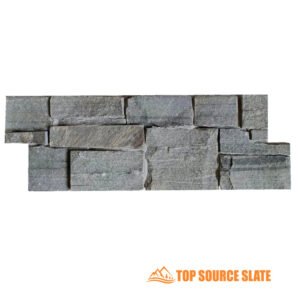 卸売価格外部天然石パネル
卸売価格外部天然石パネル -
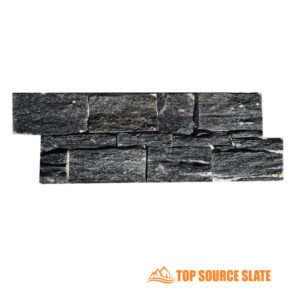 黒い石英積み重ねられた石の暖炉
黒い石英積み重ねられた石の暖炉 -
 工場価格の砂岩Zパネルストーンウォールクラッディング
工場価格の砂岩Zパネルストーンウォールクラッディング -
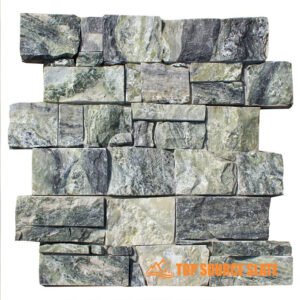 工場価格Zストーンクラッディングパネル
工場価格Zストーンクラッディングパネル -
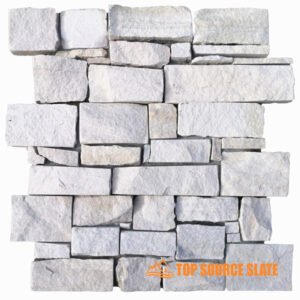 白い砂岩の積み重ねられた石の暖炉
白い砂岩の積み重ねられた石の暖炉 -
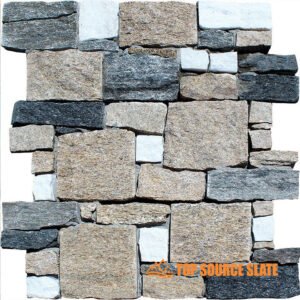 エクステリア装飾培養石レッドゲストン
エクステリア装飾培養石レッドゲストン -
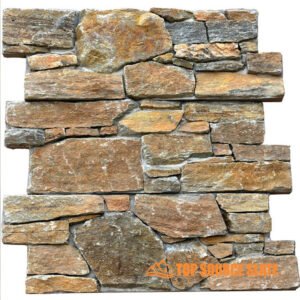 素朴な石英棚石壁被覆 Z タイル機能タイル
素朴な石英棚石壁被覆 Z タイル機能タイル -
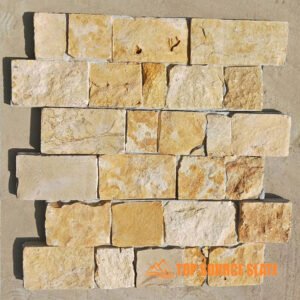 スプリットフェイススレート台帳パネル養石製品
スプリットフェイススレート台帳パネル養石製品 -
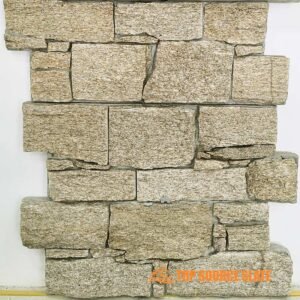 花崗岩 Z 石壁クラッディング
花崗岩 Z 石壁クラッディング -
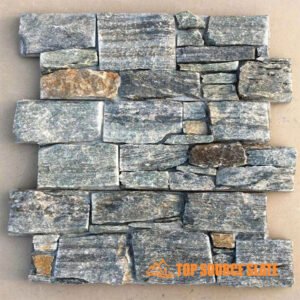 中国のサプライヤーは、さまざまな色の積み重ねられた石の覆いを取り入れます
中国のサプライヤーは、さまざまな色の積み重ねられた石の覆いを取り入れます -
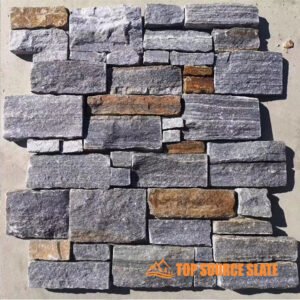 中国卸売 Z 型養殖石の国棚石
中国卸売 Z 型養殖石の国棚石 -
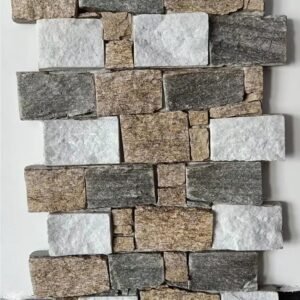 中国人気のあるインターロックストーンクラッディングZパネル
中国人気のあるインターロックストーンクラッディングZパネル -
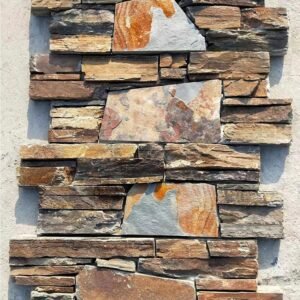 素朴なスレート乾積み石突き板の外装
素朴なスレート乾積み石突き板の外装 -
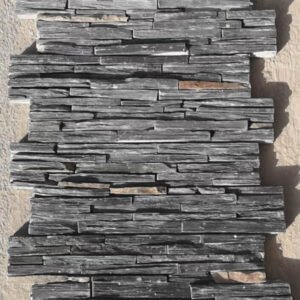 黒いスレートセメントで裏打ちされた棚石ベニヤパネル
黒いスレートセメントで裏打ちされた棚石ベニヤパネル -
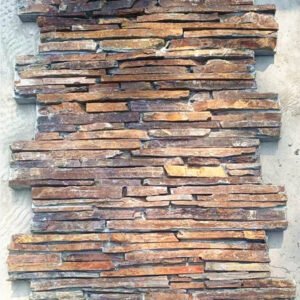 マルチカラースレートセメントは、天然のインターロッキングレッジストーンを裏打ちしました
マルチカラースレートセメントは、天然のインターロッキングレッジストーンを裏打ちしました -
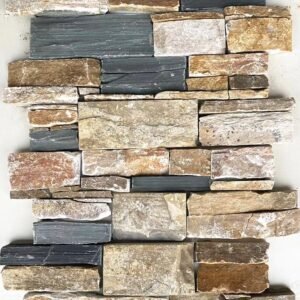 セメント裏打ち天然棚石スタックストーン壁タイル
セメント裏打ち天然棚石スタックストーン壁タイル -
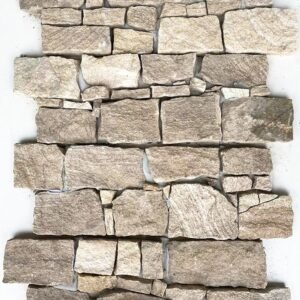 Z型パネル積み石クラッディング
Z型パネル積み石クラッディング -
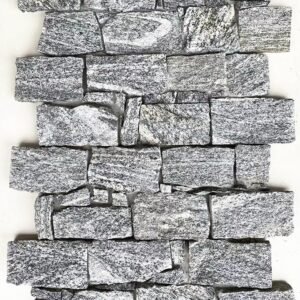 売れ筋のレッジストーン機能の壁被覆パネル
売れ筋のレッジストーン機能の壁被覆パネル
1.インストールの種類の評価
除去プロセスを開始する前に、外部の石のクラッディングがどのように設置されたかを判断することが重要です。この評価は、仕事に必要なツール、時間、および方法を決定します。
モルタル補助自然 石のクラッディング
ほとんどの外側の石のクラッディングは、石と壁の表面の間の結合剤として機能するモルタルを使用して設置されています。モルタル補助石の覆いは、外壁と内壁の両方に見つけることができます。モルタルを直接接着すると、各石を個別に削除する必要があるため、除去プロセスは労働集約的になります。モルタルが座っている石の関節の周りを彫り、各ピースを削除する最も効果的な方法です。迫撃砲の結合は通常厳しいので、重大な力を適用することを期待してください。
機械的な固定具のある石のクラッディング(フレーム付きインストール)
場合によっては、 石のクラッディング 木材または金属のいずれかのフレームワークにインストールされています。このタイプのクラッディングは通常、ネジまたは爪で固定されており、大きなセクションで取り外すことができます。クラッディングを優しく叩き、中空の音を聞くことで、クラッディングがバッキングフレームに取り付けられているかどうかを判断できます。額装された天然石のクラッディングは、一般に、パネル全体がより大きな塊で壁からこじ開けることができ、労働を減らすことができるため、除去が簡単です。ただし、下の壁に損傷を与えないようにするには、特別な注意が必要です。
ベニアの石のクラッディング
薄い石のベニヤクラッディングは、フルサイズの石の部分と比較して、軽くて除去しやすいです。ベニアは通常、モルタルまたは接着剤の薄い層を備えたタイルのように接着されています。ベニアの除去プロセスは、セラミックタイルのプロセスと似ており、結合を破って石を持ち上げるためにノミまたはスクレーパーを必要とします。ベニアの除去はあまり面倒ではありませんが、それでも壁をguめないように注意する必要があります。
2。仕事の準備
適切な準備が不可欠です。適切なツールと安全上の注意事項が仕事を容易にするだけでなく、基礎となる壁に過度の損傷を引き起こさないようにします。
保護具
石の覆いを除去するときは、安全性が最優先事項でなければなりません。空飛ぶ破片、鋭い道具、およびほこりは、このプロセス中に一般的な危険です。以下を着用してください:
- 安全ゴーグル:モルタルと石の空飛ぶチップスから目を守ってください。
- 手袋:頑丈な作業手袋は、ギザギザの石やツールからの切断を防ぎます。
- ダストマスク:モルタルまたは接着剤を除去すると、肺を刺激する可能性のある大量のほこりが生じます。
- 長袖とワークブーツ:これらは、カット、擦り傷、重い石の部分から肌を保護します。
必要なツール
正しいツールを持つことは、除去を可能な限り効率的にするために不可欠です。必要な基本的なツールのいくつかは次のとおりです。
- ハンマーとコールドチゼル:これらは、石と迫撃砲を手動で壊すために不可欠です。
- プライバー:特に額入りの設備を操作する場合、壁から大きな石のパネルをこじ開けるため。
- 石積みビット付きのパワードリル:モルタルが特に頑固な場合、迫撃砲に穴を開けることにより、彫りが薄くなります。
- アングルグラインダー:この電動工具は、フルサイズの外部石のクラッディングで厚いモルタルまたはコンクリートの関節を切断するのに役立ちます。
- ワイヤーブラシ:これを使用して、石を取り除いた後、残留迫撃砲と接着剤をきれいにします。
3。除去プロセス
インストールの種類を評価し、適切なツールと安全装備を収集したら、削除プロセスを開始できます。
ステップ1:エッジから始めます
石のクラッディングを除去するプロセスは、設置のエッジまたはコーナーに焦点を当てることから始める必要があります。これらの領域は通常、アクセスが最も簡単で、レバレッジの自然な出発点を提供します。エッジから始めると、下にある壁の大きなセクションに損傷を与えるリスクが減り、より制御された除去プロセスが得られます。
1.1。ツールの挿入
冷たいチゼルまたはこじ開けバーを使用して、天然石の覆いと壁の間にくすくなります。下の壁の構造が損傷しないように、ハンマーで小さな軽いタップから始めます。目標は、石と迫撃砲の間に十分なスペースを作成して、石を取り除くためにレバレッジの適用を開始できることです。クラッディングにモルタルを直接接着している場合は、モルタルジョイントにアクセスできるようになるまで、端を注意深く削ります。
1.2。レバレッジを獲得します
エッジストーンズを緩めたら、かじりバーに一貫した圧力をかけることで、それらを優しくこじ開けます。特に石が大きいか重い場合は注意してください。突然のジャークは、特にレンガやドライウォールの場合、下にある表面に亀裂やチップを引き起こす可能性があります。石が簡単に外れていないことに気付いた場合は、強制しないでください。次のセクションに進み、もう一度戻ってきました。
1.3。ダメージを避けます
壁に大きな損傷を与えないようにゆっくりと作業します。エッジから始めることで、大きなセクションを弱めることも避けます’ 慎重に処理されないと崩壊または破損する可能性のある構造的完全性。
ステップ2:モルタルを緩めます
外側の石のクラッディングの端が除去されると、次の課題はモルタルを緩めることです。モルタルは、石のクラッディングの主要な接着剤として機能し、その除去には患者の体系的なアプローチが必要です。
2.1。モルタルを削ります
ハンマーとノミを使用して、天然石の被覆を囲むモルタルを注意深く削り取ります。球状の直下ではなく、石の間のモルタル関節に彫刻を刻むのが最善です。これにより、モルタルを効果的に分解しながら壁に損傷を与えるリスクが減ります。モルタルは非常に強い可能性があるため、安定した圧力をかけることが重要です。繰り返される光の打撃は、ストーンベニアのクラッディングの後ろの壁を割ったり損傷したりする可能性のあるハードストライクよりも効果的で安全です。
2.2。頑固なモルタルの掘削
モルタルの厚い層のためには、石積みのビットでパワードリルを使用する必要がある場合があります。モルタルへの穴を開ける穴は、その結合を弱め、彫りやすくなります。これは、大幅に強化する時間があった古いモルタルにとって特に役立ちます。ただし、繊細なまたは乾式壁の表面の周りに電動工具を使用する場合は、過剰に垂れることが損傷を引き起こす可能性があるため、注意が払われます。
2.3。進捗状況を確認します
モルタルを介して作業するときは、石がどれだけ簡単に緩くなっているかを定期的に確認してください。石のベニアのクラッディングがその周りに迫撃砲を除去した後に動かない場合でも、他の領域で結合されている可能性があります。体系的に1つの石から次の石に移動し、急いですべてのモルタルを除去することを確認してください。
ステップ3:タフなモルタルにアングルグラインダーを使用します
モルタルが特に頑固または厚い場合、手彫りでは十分ではないかもしれません。ダイヤモンドブレードを備えた角度グラインダーは、壁を損傷することなく迫撃砲を切断するための非常に貴重なツールです。
3.1。適切なツールを選択します
ダイヤモンドまたは石積みの刃を備えた角度グラインダーは、モルタルのような丈夫な接着材料を切断するように設計されています。使用する前に、適切な安全装置、ゴーグル、手袋、ダストマスクがあることを確認してください。角度グラインダーはほこりと小さな破片を生成するため、換気の良いスペースで作業することが不可欠です。
3.2。モルタルジョイントを切断します
外部の石の壁のクラッディング間の迫撃砲の関節に沿って角度グラインダーを走らせます。目標は、その下の壁に切り込むことなく、石のグリップを弱めるモルタルに十分に深く切ることです。低速で開始し、必要に応じて圧力を徐々に増加させます。角度グラインダーの切断作用により、石と壁の間にきれいな休憩が生じ、こじ開けバーやハンマーで簡単に取り外します。
3.3。厚いまたは固体モルタルの取り扱い
モルタルが特に厚い場合は、石とモルタルを横切って切ることを検討してください “x” パターン。これにより、石をより小さくて管理しやすいセクションに分割するのに役立ちます。モルタルが切断されたら、チゼルまたはプライバーを使用して、外部のクラッディングストーンを断片的に除去することができます。角度グラインダーは強力であることを忘れないでください。壁に損害を与える危険性があるため、あまりにも多くの力を使用しないでください。
ステップ4:セクションの大きなパネルを取り外します(フレーム付きクラッディング用)
外部の石のクラッディングのアイデアが木製または金属のフレームに固定されている額入りのインスタレーションの場合、1回で大きなセクションを削除できるため、プロセスははるかに速くなります。
4.1。フレームインストールの識別
フレーム付きの石のクラッディングの取り付けは、通常は木材または金属に搭載されており、クラッディングパネルを所定の位置に保持しています。壁をタップすると、造影されたセクションを識別するのに役立ちます。これは、モルタルアドヒア付きクラッディングと比較して中空に聞こえるからです。位置したら、個々の石ではなくフレームからパネルを取り外すことに焦点を当てます。
4.2。大きなパネルをこじ開ける
パネルとフレームの間に格納バーまたは大きなノミを挿入します。パネルをバッキングから分離するために、安定した一貫した圧力を適用します。場合によっては、パネルをこじ開ける前にネジまたは爪を取り外す必要があります。大きなセクションを引き抜くときは注意してください。それらは重くなる可能性があり、フレームから解放されたときに突然移動する可能性があるためです。
4.3。より重いセクションの管理
クラッディングが特に重い場合は、パネルがフレームから解放されたら、パネルを下げるのに役立つ援助を求めてください。大きなセクションを落としたり誤ったりすると、周辺地域に損傷を与えたり、安全リスクを引き起こす可能性があります。
4.4。クリーンアップ
パネルが取り外されると、フレームを所定の位置に保持するネジ、爪、または接着剤からの破片がある可能性があります。これは、ワイヤーブラシまたは同様のツールを使用して片付け、将来の作業のためにきれいな表面を残す必要があります。
4.壁の損傷の処理
石のクラッディングを取り除いた後、損傷を求めて壁を点検することが重要です。外部の石のクラッディング、特にモルタルアドヒアルの設置は、表面を不均一な下に置いたり、穴を開けたりすることができます。
壁の損傷の修復
- パッチホールと亀裂:高品質のパッチング化合物を使用して、モルタルによって残された穴を埋めます。大きな亀裂やgougesには、より実質的なフィラーが必要になる場合があります。化合物をこてで均等に塗ってから、乾燥したら滑らかな仕上げをするために磨きます。
- 壁の表面を補強します:下にある壁が重大な損傷を受けた場合は、新しい表面仕上げを適用する前に、結合剤または追加の石膏で強化することを検討してください。
残留迫撃砲と接着剤の洗浄
石の壁を覆うパネルを取り除いた後、壁には残留モルタルまたは接着剤が詰まっている可能性があります。硬いワイヤーブラシまたはパワーワッシャーを使用してこれらの残骸をこすり落とすことができ、修理や新しい設置の準備ができてきれいな表面を残します。
5。特別な考慮事項
ベニア対フルサイズの石
薄い石のベニアとフルサイズの外壁石の覆いには違いがあります。通常、タイルのように接着されているため、ベニアはより軽くて取り外しが簡単です。ただし、フルサイズの石は、より重く、しばしば壁の構造に不可欠であるため、より多くの力とケアを必要とします。
いつ専門家に電話するか
削除プロセスや広いエリアに対処することがわからない場合は、専門家の助けを求めるのが最善かもしれません。専門の請負業者は、クラッドを迅速かつ効率的に削除し、財産への潜在的な損害を最小限に抑えることができます。
6。FAQ
1.石のクラッディングを除去するためにどのツールを使用しますか?
石を覆うには、通常、必要です ノミ、 ハンマー、a 石積みの格子バー。広い領域の場合、aを使用できます チゼルアタッチメント付きのパワードリル またはa ジャッカハンマー 材料を緩めるのに役立ちます。 保護具、手袋やゴーグルなどは、このプロセス中に不可欠です。
2。石のベニアを除去する最も簡単な方法は何ですか?
石ベニアを除去する最も簡単な方法は、次の手順に従うことです。
- グラウトラインを獲得します グラインダーまたはユーティリティナイフを備えた石のベニアの周り。
- aを使用します ノミとハンマー その端でベニアを緩めます。
- こじ開けます 石積みのこじ開バーで慎重にベニア。
- 大きなセクションまたは頑固なエリアの場合、aを使用します パワーチゼル プロセスをスピードアップします。
3.石の覆いと石のベニアの違いは何ですか?
- 石のクラッディング:装飾的な目的で、建物の外側または内部の表面に適用される、薄い、天然、または人工石の部分を指します。それは保護層と美的層として機能します。
- ストーンベニア:天然石の外観を模倣する、しばしば人工的な薄い石の部分を指します。ストーンクラッドと同様の方法で使用されますが、通常、より軽くてインストールしやすいです。
4。ストーンクラッディングはどのように添付されていますか?
石のクラッディングが使用されています セメントベースの接着剤 または モルタル。コンクリートなどの準備された表面に直接適用できます。 メタルラス または セメントボード 額入り構造。場合によっては、特に外面上のサポートを追加するために、機械的なアンカーまたはクリップが使用されます。
7。結論
削除 外装石張り 慎重な計画と適切なツールを必要とする労働集約的なプロセスです。あなたのクラッドが迫撃砲であるか、フレームに設置されているかにかかわらず、成功の鍵は忍耐と精度にあります。小規模なDIYプロジェクトは管理可能ですが、より大きなまたはより複雑な仕事には専門家の支援が必要になる場合があります。これらの手順に従うことにより、石の覆いを効果的に取り除き、改修の次の段階に向けて壁を準備できます。
探しているなら 積み重ねられた石造りのメーカーとサプライヤー、製品をチェックすることをお勧めします。
- モザイクメダリオン 1010個の製品
- クレイジー舗装石畳 1414製品
- ランダムなルースストーン 1818製品
- ドライスタックストーン 2424製品
- 滝の積み石 1717製品
- 大理石の積み石 1010個の製品
- 分割面の壁タイル 1515製品
- レッジストーン壁被覆材 2828製品
- 積み上げられた石 3737製品
18年以上の輸出経験があり、注文の前にサンプルを提供しています。
もっと助けが必要な場合、またはカスタマイズされたものについて話し合いたい場合は、お問い合わせ いつでも。
そして、あなたも助けるために私たちの専門知識を共有したいです!

